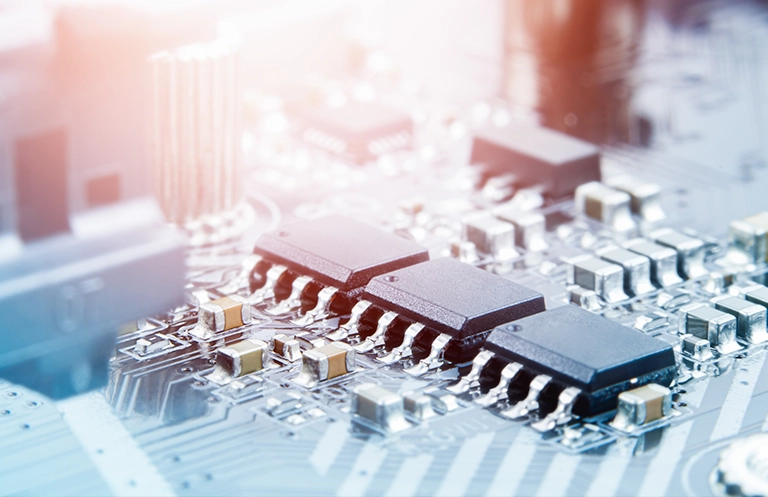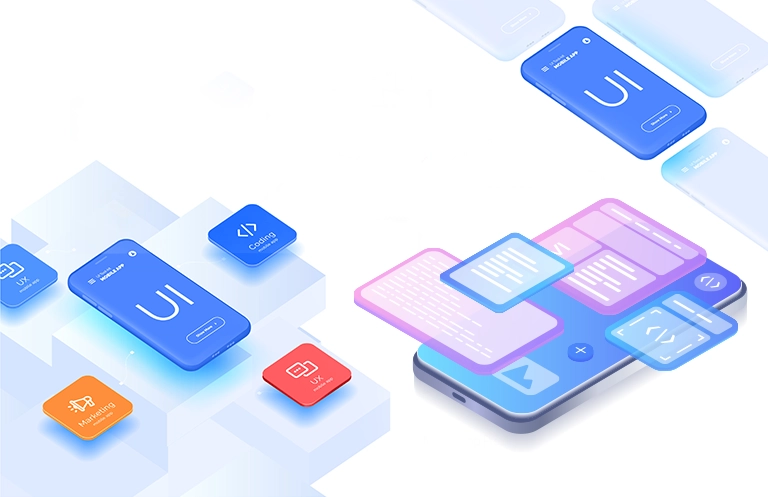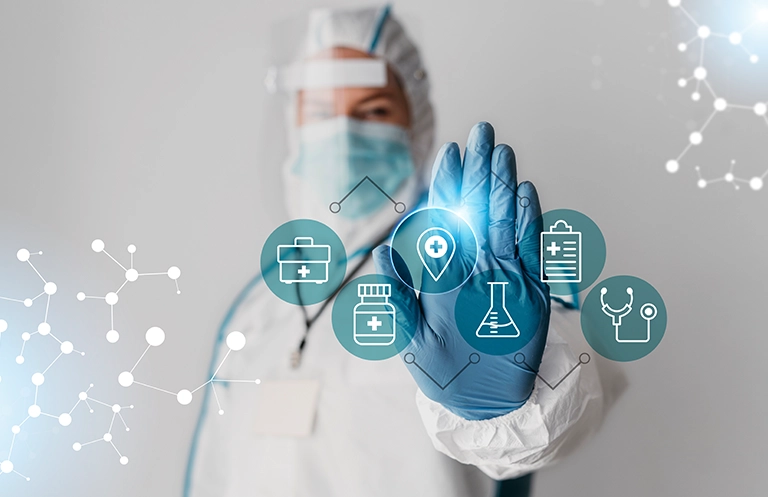Product engineering service can be elaborated as an engineering consulting activity, which uses various hardware, embedded, software and IT services solution for the designing and development of products. There are different stages of product engineering from inception to the end of the lifecycle of a product.
As a testament to their significance, the global market for these services is projected to witness remarkable growth, reaching a substantial value of $1510.0 billion by 2027. With a robust CAGR of 7.4% from 2022 to 2027, as indicated by the Markets and Markets report, the importance of product engineering services is set to soar in the coming years.
Here are the most asked questions about product engineering services –
1. What is Product Engineering?
Product engineering is about developing an idea into a commercially viable product for the market. It refers to a set of processes ranging from product conceptualization to designing, developing, testing, deploying, and later to sustenance and re-engineering. It can cut across different aspects of mechanical, hardware, embedded, and software components of product design. The primary objective of product engineering is to create a product that is reliable, functional, and innovative yet cost-effective. This process requires a multidisciplinary approach, collaboration between teams, and the use of modern tools and technologies to ensure that the final product meets the desired quality standards.
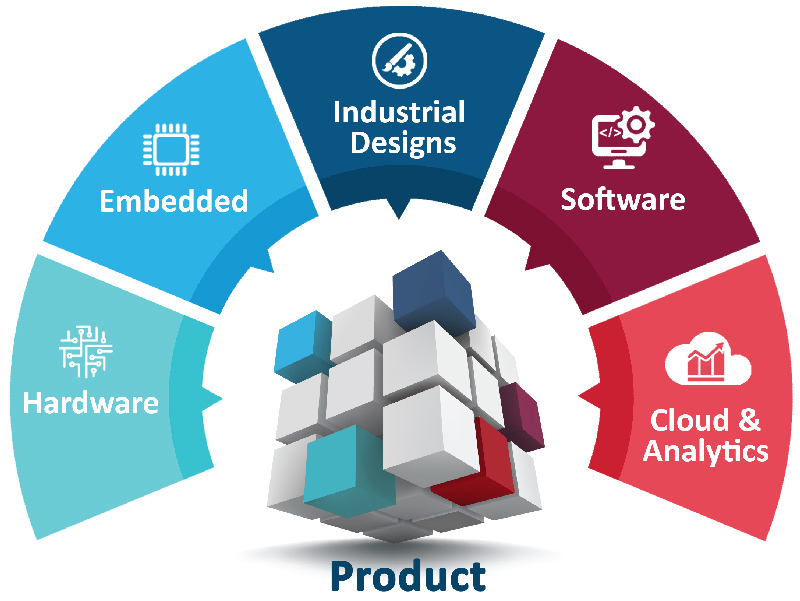

What is Product Engineering
2. What are the various stages of product engineering?
A typical product engineering stages involve
- Ideation
- Feasibility Study / Product Planning
- Design, Development, and QA
- Prototyping
- Manufacturing / Production
- Sustenance

3. What Is End to End Product Engineering?
End-to-end product engineering refers to a comprehensive approach that covers the entire lifecycle of a product, from its conceptualization and design to development, manufacturing, and even post-production support. It involves the integration of various engineering disciplines, such as hardware, software, embedded systems, and IT services, to create a complete and functional product.
End-to-end product engineering aims to ensure seamless coordination and collaboration across different stages of product development, resulting in a high-quality, market-ready product that meets customer requirements and delivers a superior user experience. It encompasses activities like ideation, prototyping, testing, validation, production, and ongoing support, providing a holistic solution for bringing innovative products to market.
4. What is Engineering Services Outsourcing (ESO)?
Engineering Services Outsourcing (ESO) refers to the outsourcing of certain product engineering activities, such as product design, prototyping, processes, testing, quality control, product lifecycle management etc. It can even be consultation with specialized product engineering service providers (like eInfochips) to gain the advantage of expertise, cost arbitrage, faster time-to-market and enhanced value engineering etc.
5. What is an embedded system?
An embedded system can be defined as a combination of computer hardware and software, which is designed to carry out a specific set of functions within a larger system. As embedded systems are engineered to perform only a defined set of tasks, design engineers can optimize their size, reliability, power consumption, performance, and cost. These systems are developed on a large scale and share expertise across a range of applications and environments. Industry machines, medical equipment, household appliances, cameras, vending machines, wearables, and mobile devices are all examples of devices that use embedded systems.
6. What are the elements of an embedded system?
Embedded systems mainly consist of two major elements such as hardware and software.
Hardware elements
When we talk about hardware requirements for embedded systems, it is developed either by using a microcontroller or by using a microprocessor.
- Microcontroller: It’s a single integrated circuit based small computer or System on Chip (SoC) which generally includes a processor, integrated memory input/output (I/O) peripheral devices. Microcontrollers are widely used in embedded systems, as it requires lesser external components.
- Microprocessor: It is a computer processor on a microchip, which uses external chips for peripheral devices and memory and due to that, it requires more devices on board. Microprocessors are used in large-scale embedded systems.
Software elements
Software is one of the key elements to run the microcontroller of any embedded system. The operating system and software requirements for embedded systems are different from a conventional computer-based system.
- Operating system: Standard computer-based systems generally use operating systems like OS X, Windows or GNU/Linux but embedded systems use OS such as LynxOS, VxWorks, BeRTOS, ThreadX, Windows CE, Nucleus RTOS, OSE.
- Programming Language: The code for the embedded software is written in some common languages like C or C++ as well as many high-level programming languages like JavaScript, Python, ADA.
7. What are the different things to be considered in embedded hardware design?
On the hardware side, designers need to check the voltage requirements, power availability (know if the system would be always connected to a power source or can run on a battery), the architecture of the controller/processor according to the processing speed and memory available on board. Next step would be to check the ICs for conversion from analog to digital and vice versa. Additionally, designers should also look into network modules if the device is going to be connected to the internet. To put it in simpler words, the steps involved in hardware design vary based on the requirements.
8. What is meant by embedded software engineering?
Embedded software engineering is the procedure of creating specialized software to regulate machines and devices that are different from traditional computers. Embedded systems are formed due to the nexus of non-computer based devices with software engineering. The software has to adapt and work within the constraints of the hardware specifications. Embedded software engineering involves developing software exclusively created to run on embedded systems, which are unique computer systems integrated into larger devices or machines. Embedded systems can be found in an enormous range of products, including automobiles, home appliances, medical devices, and consumer electronics.
9. What are the steps involved in embedded software design?
Looking at the software end, designers need to understand the current design and get a clarity on what additional features are required to improve the end product. Based on the final list of features, they need to decide if the device requires an operating system. Next step is to decide if the system requires GPOS (General Purpose Operating System) or RTOS (Real Time Operating System), decide the bus structure, number of controllers/processors to implement parallel processing, memory, and connection to the server using internet or intranet.
10. In embedded systems, what is the difference between firmware and operating system?
Firmware is much more than the BIOS (Basic Input/Output System) or the bootstrap. In more sophisticated applications, firmware can do way beyond just loading the code to get things started. Such applications can be designed to perform multiple parallel operations such as address routing, math coprocessing, timers, signal processing, power and reset sequencing, LED controls, and relay controls.
In simpler terms, the firmware is a piece of code that is stored in the non-volatile memory. In embedded devices such as printers and home appliances, the firmware is responsible to load and manage the operating system within the device. The operating system, on the other hand, provides the applications with an execution context to perform on some set of peripherals. Therefore, it is the operating system’s job to carry out the actual task.
11. What is design thinking in product engineering?
Design Thinking is a newer approach to problem-solving. It is a strategic design methodology that provides a user-centric and solution-based approach to solve complex problems. It allows the blend of technology and business models to solve customer problems or to find better solutions to the existing approach, by putting the customer at the center of the entire product development journey. With an ever-increasing demand for better user experience (usability and value) from consumers, product companies are compelled to continuously experiment and innovate, in quick cycles, for increased consumer adoption and competitive advantage in the market. That is where the concept of design thinking came into existence.
12. Why do we need to apply design thinking in product engineering?
- It focuses more on the problem to find the best solution by keeping end user at the center of the process. This approach focuses more on the real needs of the user, rather than the perceived problems of the product teams.
- Design thinking focuses on adding value and solving actual problems through agile driven user stories, in a creative and innovative approach.
- It keeps the idea of “design, test and redo” as a core process, which yields results that are more powerful and interesting.
- It encourages innovation and R&D, by exploring, brainstorming, and evaluating multiple solutions for the same problem.
- The journey starts and ends with the USER / CUSTOMER. It allows the product teams to closely understand the user preferences and experiences, and thus allows for better product adoption, experience, and scalability.
- It allows for iterative product development, thereby giving the flexibility to prioritize solutions, based on user needs, and progressively add features to the product. With quick feedbacks, it allows companies to recoup faster from any product failures.
13. What is Product Design?
Product design can be defined as the process of identifying a product opportunity in the market by clearly defining the current challenges, coming up with a precise solution for those challenges, and then validating the solution from real users.
Product designers work with engineers and marketers to develop the core design that includes the technological and mechanical aspects of the product while considering the usability of the product.
14. How does the process of design thinking work in product development?
The framework follows an overall flow of four key components such as 1) Empathy, 2) Collaboration, 3) Interactive Thinking and 4) Experimentalism. Within these four components, there can be six different stages involved: Empathize, Define, Ideate, Prototype, Test, and Implement.

15. When thinking about a product’s design or features, what approach can be adopted to find the right solution?
To create a perfect solution, product designers need to understand the user experience of the product and not just the visual elements of the product.
Following are the steps of design thinking that can be taken to find a fitting solution:
Empathize: Designers need to put themselves in the end-users’ shoes to understand their expectations and concerns.
Define: After learning about the pain points of the target customer, define the challenges that need to be addressed.
Ideate: Think about all the possible solutions and then check its feasibility.
Prototype: Create a product prototype to see how the final product would look and feel. A product prototype can also be made to showcase the primary features of the product.
Test: Test the product and get users’ feedback.
16. How to develop a product strategy?
Before the design process starts, the product team needs to define the product vision and create a product strategy. Before starting the product development, the designer should understand its purpose of existence.
Some of the things to consider when defining a product design strategy are:
- Keep the target customer at the center.
- Ensure all the team members share the same vision.
- Make a reference document that entails every detail about the product design and functioning.
- Use the reference document as a north star to guide the team during the product development process.
- Define success criteria and KPIs, and then use them to evaluate progress.
17. What is the role of Information Architecture in Product Design?
Information Architecture can be defined as the structure of an application, website or a product. It allows the end users to get an overview of where they are in the structure of things and where they can find the information that they are looking for, in relation to their current position. The aim of information architecture is to make the website or software or product more usable for the product by providing details about navigation, hierarchy, and categorizations.
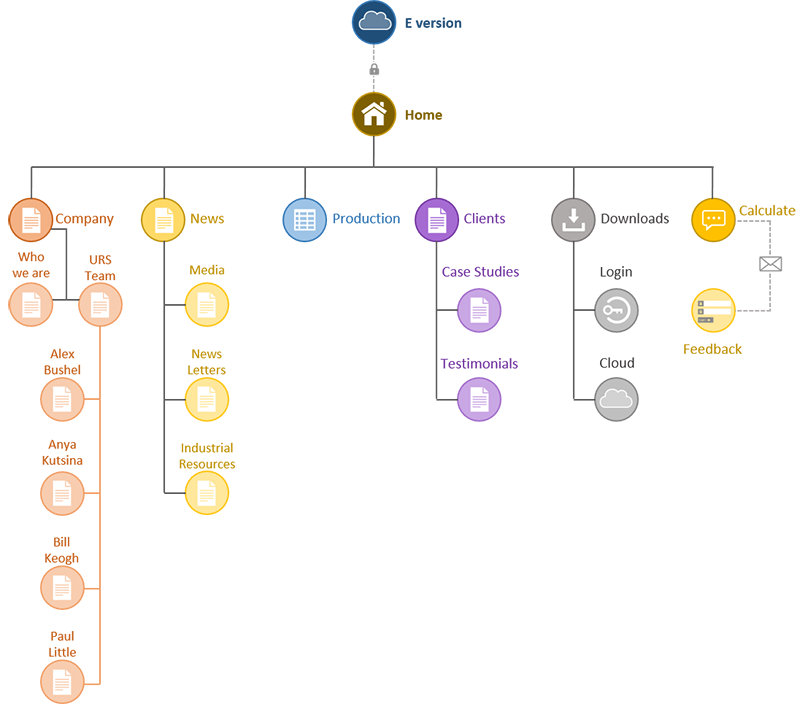
18. What are the principles of design thinking?
There are four important principles to implement a design-thinking approach successfully for any kind of problem-solving and product development.
- Human rule: This principle states that all design activities are for social innovation, which requires a human-centric approach as the prime factor.
- Ambiguity rule: According to this rule, every design thinker needs to realm ambiguity by doing experiments, utilizing their ability, expertise, and knowledge to see solution to problems differently, and from multiple user angles.
- Re-design rule: Every design is a re-design in nature. Humans (end-user) are continuously looking for innovative ways to solve already solved problems, along with newer problems.
- Tangibility rule: Tangible ideas such as prototypes and products are the easiest and most convenient ways for design-thinkers to communicate, understand and solve problems.
19. How to implement design thinking in your company?
Though converting your company from a traditional approach to design-centric approach can be a time-consuming and expensive task, it is necessary in order to provide the best product experience for the users and to stay ahead of the competition.
To develop a design-centric culture in your company, it is essential to identify the right leaders, who value design and can drive the culture of design thinking across your organization. It is imperative to form smaller collaborative units, with stakeholders from every department to involve in the product journey, right from the conceptualization stage. The leaders should be given the autonomy to experiment with ideas, define progressive goals, and to set the right design thinking approach, that will suit with the organizational dynamics.
Design thinking approach requires long-term investment in infrastructure for design, training, and support across the company. To make it a driving force in the organization, proper training is required for everyone – by the way of in-person training, workshops or online courses.
20. What is the role of software testing in embedded software engineering?
To survive and grow in today’s competitive market, it is required to produce good quality products on-time, and software testing plays a very crucial role in it. Software testing helps ensure the working of a software as per specification, detect defects in the software (if any), reduce development and maintenance cost and avoid any possible failure because it can be very tedious to fix the errors in the later stages of the development lifecycle. When it comes to embedded engineering, software testing helps maintain the quality of each embedded app since bugs or errors in these embedded applications can cause a huge performance and monetary loss. E.g. April 1999, a software bug caused the failure of over $1 billion satellite launch, considered as the costliest accident in the history.
21. What are the approaches to perform embedded software testing?
There are two different approaches followed in embedded software testing 1) Manual Testing and 2) Automation Testing.
- Manual Testing: This type of testing requires a tester’s involvement to test the software manually without using any kind of automated script or automated tool. In this method, a tester tests the software and identifies bugs and unexpected behavioral issues. There are various types of testing involved in manual testing like functional testing, integration testing, regression testing, end-to-end testing, GUI testing, compatibility testing, system testing and user acceptance testing. Testers use test cases, test plans or test scenarios to make sure the testing of the software executed properly.
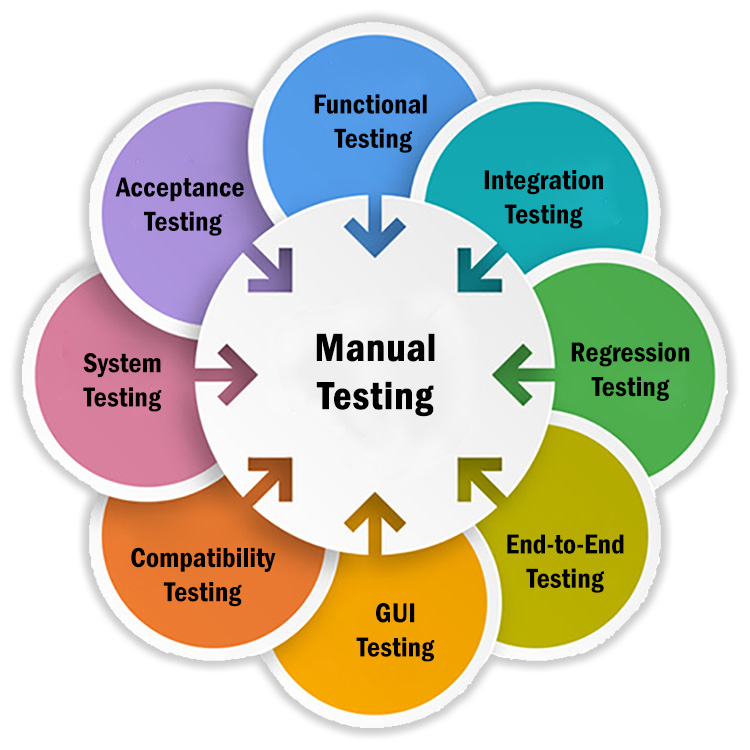
- Automation Testing: As its name specifies, it is an automated process where a tester uses automated codes/scripts or automated testing tool/application/framework to test the software. Concisely, it is an automated process for testing the functioning of the software.

22. What are the tools available for automating testing of embedded software products?
There are many different tools used for automation testing to test any embedded software product.
- HP Quick Test Professional
- Selenium
- TestingWhiz
- Ranorex
- Sahi
- Tosca Testsuite
- Testing Anywhere
- WinRunner
- LoadRunner
- SilkTest
- Visual Studio Test Professional
- WATIR
- IBM Rational Functional Tester
- TestComplete
- Snapbricks IoT Test Suite
23. What are the methods used in software product testing?
The testing phase of the product is required to ensure its seamless operation as expected. Different testing methods are employed by testing groups that ensure a product’s functioning. Waterfall, Agile, V model, spiral model, RUP, RAD methodology can be used based on the requirement in different phases of the testing. Let’s understand two majorly used methodologies as below:
- Waterfall Methodology: In this method, testing happens upon completion of all product development cycle, i.e. before the release of the product.
- Agile Methodology: In this method, testing happens in parallel to product development phases. In other words, a software is tested on an incremental basis, as and when new iterations/development builds are available instead of waiting until the completion of the final product.
24. What are the current trends in software product testing?
Here are some of the prevailing software testing trends in the embedded product development industry.
- Increasing usage of open source tools for successful execution of Agile, DevOps, Test management, Defect management and test automation.
- Time and quality of the product are going to be the biggest factor in the software testing market as every end-user or business will demand the best product and it should be available as early as possible.
- As the volume of data is increasing day by day, it will open a new phase for software testing companies to work on Big Data testing.
- Considering the era of IoT, demand for hardware testing will also increase as IoT is all about the nexus of hardware & software.
25. What is a product prototype?
A product prototype is a fundamental working sample, mock-up, model or a simulation of the actual product that gives your ideas a tangible form. Sometimes, prototyping is also referred to as materialization as it is the first step towards transforming a concept or vision into a real physical form.
The motive of prototyping a product is to validate the design of the final product. Based on this prototype, different observations will be made and numerous product variations will be discussed before starting the production.
26. What are the qualities of a good prototype?
Some of the factors that create a good product prototype include:
Representation: A good prototype perfectly represents how the actual product will look and work like.
Accuracy: A prototype with higher accuracy will help the manufacturer to receive better feedback and response.
Functions: An ideal prototype will be capable of performing the basic functions of the actual product.
Upgrade: A good prototype offers the ability to improve many of its aspects with minimal efforts.
27. What are some different types of prototyping?
Various types of prototypes are developed for different purposes; here are some of them:
Functional Prototypes: These prototypes are developed to imitate the functions of the envisioned product. The functioning of the prototype should be as close to the product as possible, even if it looks different from the actual product. Such prototypes are created for products that are more function-oriented rather than being display-oriented.
Display Prototypes: These prototypes focus more on the visual appearance and product look and feel rather than focusing on its functioning. The prototype is created to look like the actual product minus the functions that it is supposed to perform.
Miniatures: Miniatures are smaller versions of the product that are usually made using 3D printing. They focus on both the display as well as the functional aspects of the product, however, they lack a lot of qualities that the final product might have.
28. How can we differentiate product prototypes from a usability perspective?
If we categorize product prototypes from a usability perspective, it can be classified into the following types:
Throwaway Prototypes: These prototypes are developed just with a purpose to represent what the actual product can do. Rather than becoming a part of the product, these prototypes are eventually discarded. Throwaway prototypes are also referred to as close-ended prototypes.
Evolutionary Prototypes: Instead of being discarded, these prototypes are built to be robust so that they can be enhanced and built upon to form the final product that the customer sees. Such prototypes present a great way to avoid wastage of resources.
From silicon to device to digital & quality engineering, eInfochips maps the entire journey of its clients in the product lifecycle, all the way from design thinking at conceptualization to product design & development to verification & validation, and from IoTification of devices to Cloud & Big data services to Manufacturing & Sustenance. Schedule a call with our experts to know more about our product engineering services.




